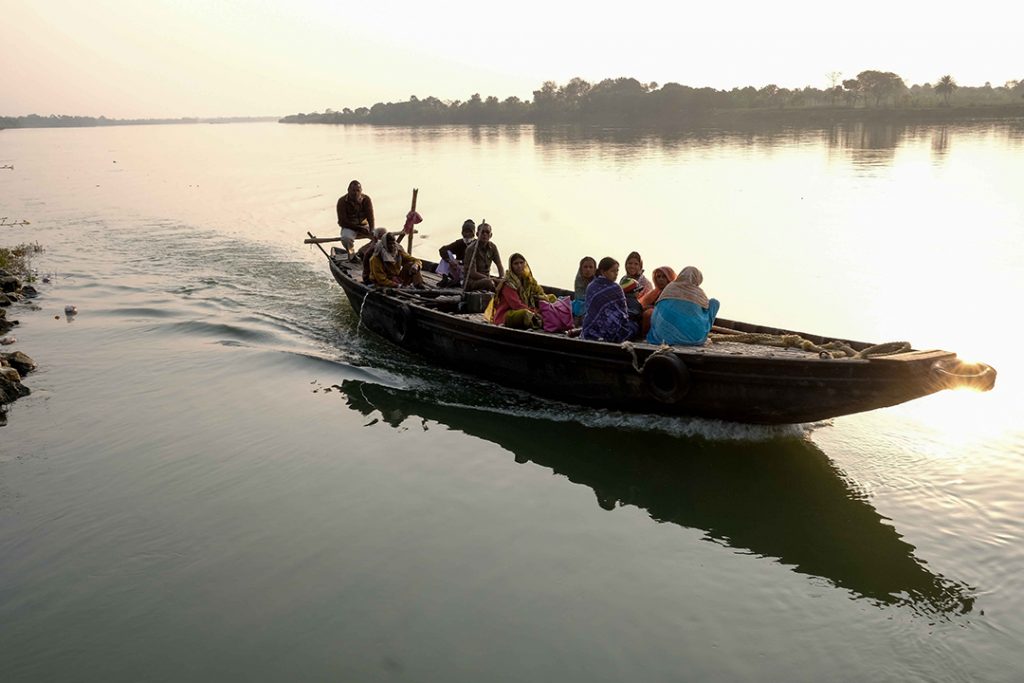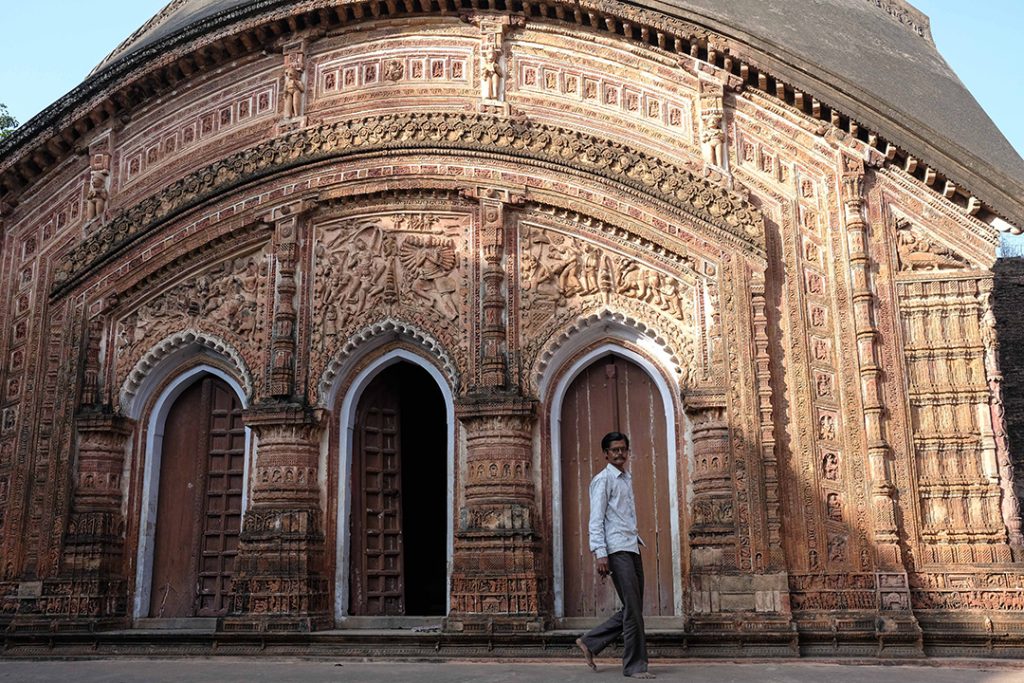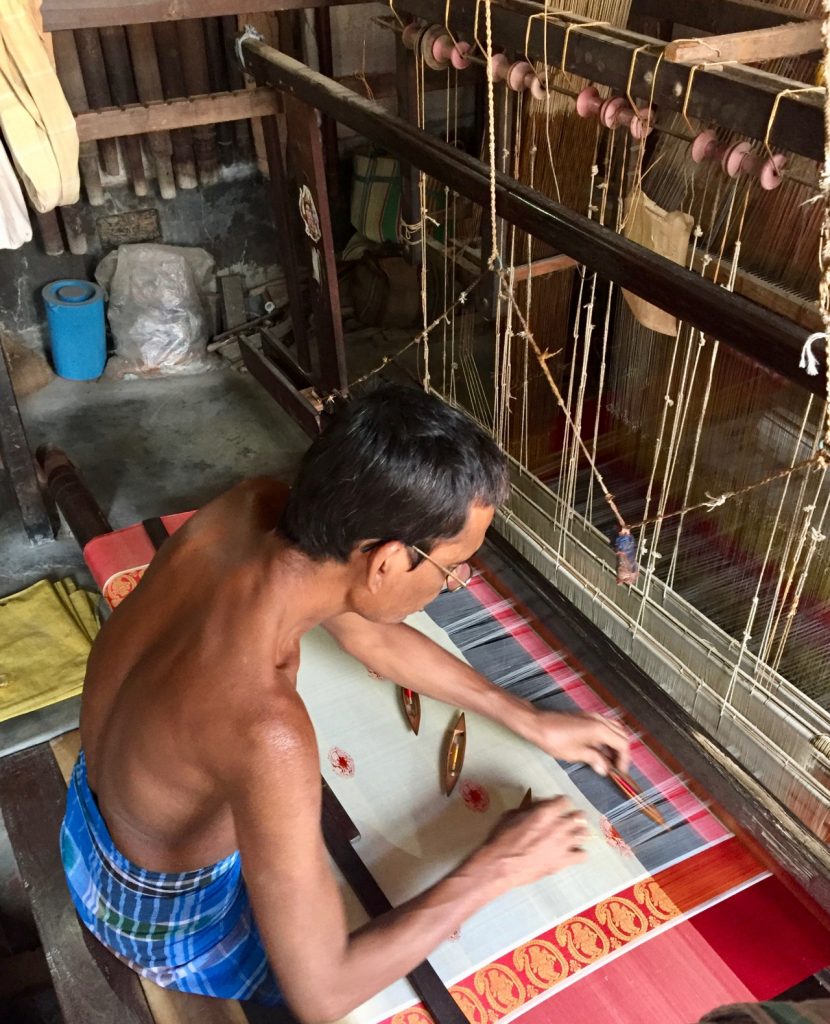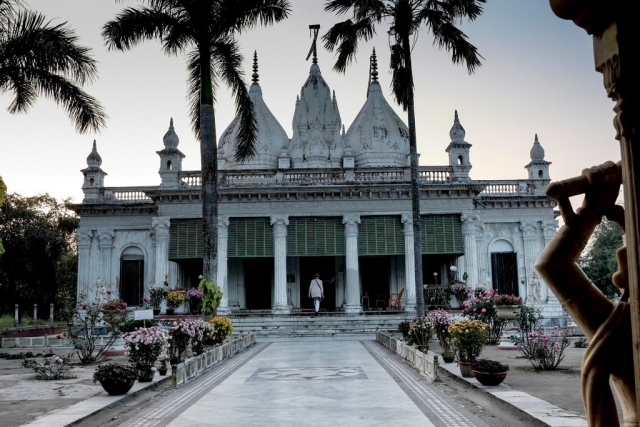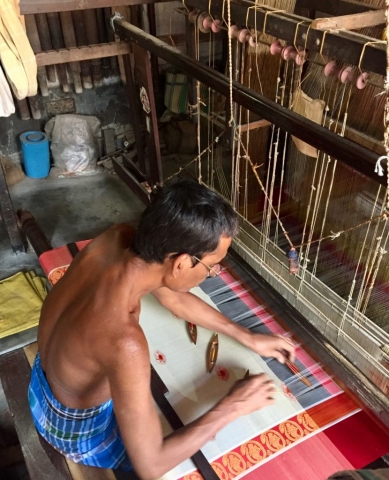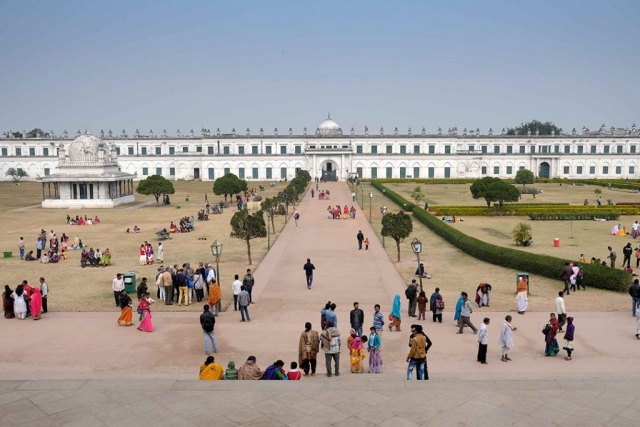Day 2 – Azimganj to Hazarduari
The day is led by Sandip Nowlakha, founder of the Murshidabad Heritage Development Society
Schedule
- 10:00am: Meet at Motijheel, Lalbagh
- Walk with Raibenshe artists
- Visit Hazarduari Palace, Kathgola Palace
- Tour of Cossimbazar Rajbari
- Light & Sound show at Motijheel Park (optional)
To book or for more details
Contact: tamali@thinkarts.co.in
Murshidabad
Partner: Murshidabad Heritage Development Society
Murshidabad was the capital of Bengal when the British first came to India. A bustling trade centre, this area attracted not only overseas traders but also bankers and merchants from North India. The Jains settled down primarily in the Jiaganj and Azimganj area where our story begins.
Although most of the Jain families moved to Kolkata, Murshidabad is still highly regarded for its many Jain temples and huge numbers of people visit every year. There are also a number of Hindu terracotta temples like the Char Bangla dating back to the 18th century.
In the absence of a bridge connecting the two areas, the quickest way to get from Azimganj to Jiaganj is to cross the Bhagirathi river by boat. There is always a boat to be found at the ghats, and they can often be seen being repaired, or new boats being built, on the riverside.
The tanti-para, (weaver settlements) are just a short walk from the Jiaganj ghat. Although the demand for silk has declined over the years, there are some weavers who still continue with the tradition of producing the finest quality of silk, that this area was once world famous for.
The fact that Murshidabad was a very prosperous town in the 18th century is evident from the grand Rajbaris like the Kathagola Palace, Cossimbazar Rajbari, Nashipur Palace, which are now being restored by the efforts of the present generation, and see hundreds of visitors every year.
The most iconic landmark of Murshidabad is the Hazarduari Palace, the palace with 1000 doors. This three storey building was designed and built under the supervision of Colonel Duncan Mac Leod. The Palace that was used for holding meetings and official work of the Nawabs, now houses a museum, displaying the vast collection of the Nawabs. The compound also houses the Nizamat Imambara, the largest of its kind in India. The Murshidabad Heritage Development Society (MHDS) was born in 2010 to help preserve and promote this local heritage. The Society is supported at high level by the State Tourism Department and the Ministry of Culture but also local spiritual leaders, architects, business leaders and NGOs. In January 2017 MHDS hosted the Silk River artists residency and invited the project to be part of the Murshidabad Heritage Festival and Boat Race. The online magazine of the Murshidabad Heritage Festival can be found here


